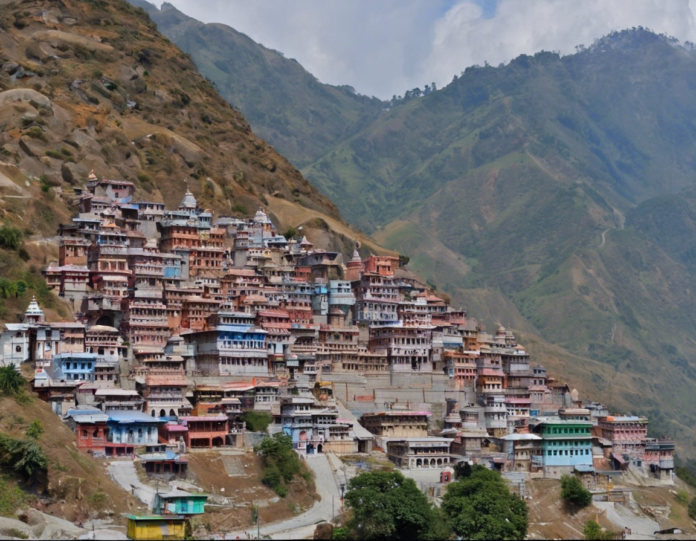Introduction
Embarking on a spiritual journey to Char Dham in India is a sacred pilgrimage that holds great significance for Hindus. The Char Dham Yatra comprises four holy sites nestled in the Himalayas: Yamunotri, Gangotri, Kedarnath, and Badrinath. Each site is dedicated to a different deity and offers devotees the opportunity to seek blessings and spiritual solace in the lap of nature. This journey not only fulfills religious duties but also provides a chance for self-reflection, introspection, and rejuvenation.
Yamunotri
The journey commences with Yamunotri, the source of the holy River Yamuna. Situated at an altitude of 10,797 feet in the Garhwal Himalayas, the shrine is dedicated to Goddess Yamuna. The main attractions include the Yamunotri Temple and the Janki Chatti Hot Springs. Pilgrims take a dip in the hot springs to cleanse themselves both spiritually and physically.
Gangotri
The next stop on the Char Dham Yatra is Gangotri, the origin of the River Ganga. Located at an elevation of 10,170 feet, this shrine is dedicated to Goddess Ganga. The Gangotri Temple, built in the 18th century by Gorkha General Amar Singh Thapa, is a major pilgrimage site. The Gangotri Glacier and the Bhagirath Shila are must-visit spots for spiritual seekers.
Kedarnath
Kedarnath Temple is one of the twelve Jyotirlingas of Lord Shiva and is a crucial stop on the Char Dham circuit. Nestled at a height of 11,755 feet in the Rudraprayag district of Uttarakhand, Kedarnath offers a serene ambiance for devotees. The temple remains closed during winters due to heavy snowfall but reopens in April-May. The Vasuki Tal Lake and the Chorabari Glacier are popular trekking destinations near Kedarnath.
Badrinath
The final destination on the Char Dham Yatra is Badrinath, the abode of Lord Vishnu in his form as Badrinarayan. Situated at an altitude of 10,170 feet, Badrinath Temple is a major pilgrimage site for Vaishnavites. The temple is believed to have been established by Adi Shankaracharya in the 8th century. The Mana Village, Vasudhara Falls, and Tapt Kund Hot Springs are other attractions near Badrinath.
Tips for Char Dham Yatra
– Travel Light: Given the rugged terrain and long distances, it is advisable to pack light and carry only essentials.
– Weather Precautions: The weather in the Himalayas can be unpredictable, so it is crucial to carry warm clothing, rain gear, and proper footwear.
– Physical Fitness: The Char Dham Yatra involves trekking and walking long distances, so pilgrims should ensure they are physically fit before embarking on the journey.
– Altitude Sickness: Due to the high altitudes, some individuals may experience altitude sickness. It is recommended to acclimatize properly, stay hydrated, and consult a doctor if needed.
– Booking Accommodation: During peak pilgrimage seasons, it is advisable to book accommodation in advance to avoid any last-minute hassles.
Frequently Asked Questions (FAQs)
1. When is the best time to undertake the Char Dham Yatra?
The best time for the Char Dham Yatra is from April to November when the weather is favorable and the routes are accessible.
2. Are there medical facilities available along the Char Dham route?
Medical facilities are limited in remote locations, so pilgrims are advised to carry basic medicines and consult a doctor before the journey.
3. Can senior citizens undertake the Char Dham Yatra?
While the journey can be physically demanding, senior citizens can undertake the Char Dham Yatra with proper planning, adequate rest, and assistance.
4. Is it necessary to engage a tour operator for the Char Dham Yatra?
While it is not mandatory, engaging a reputed tour operator can simplify travel arrangements, accommodation, and other logistics.
5. What are the accommodation options available during the Char Dham Yatra?
Accommodation options range from budget guesthouses to luxury hotels along the Char Dham route, catering to diverse needs and preferences of pilgrims.
